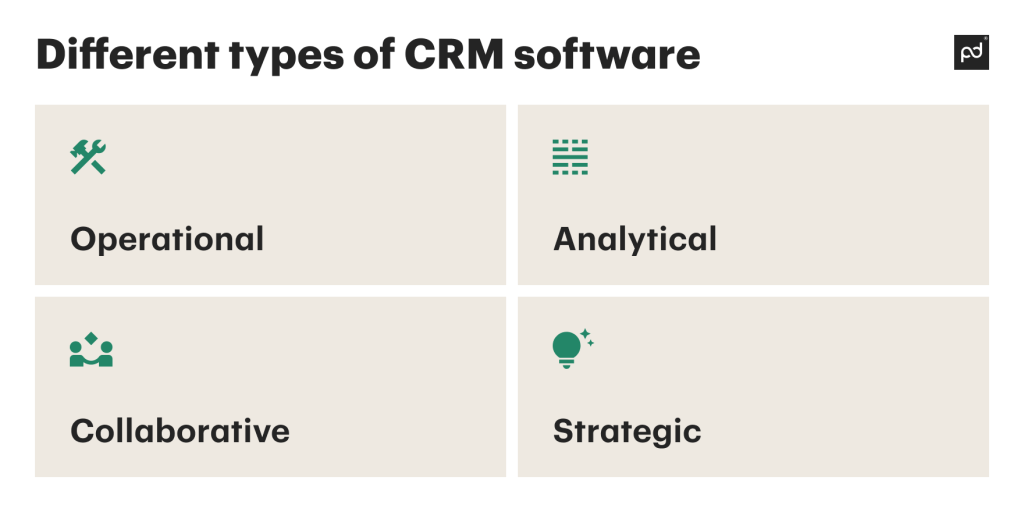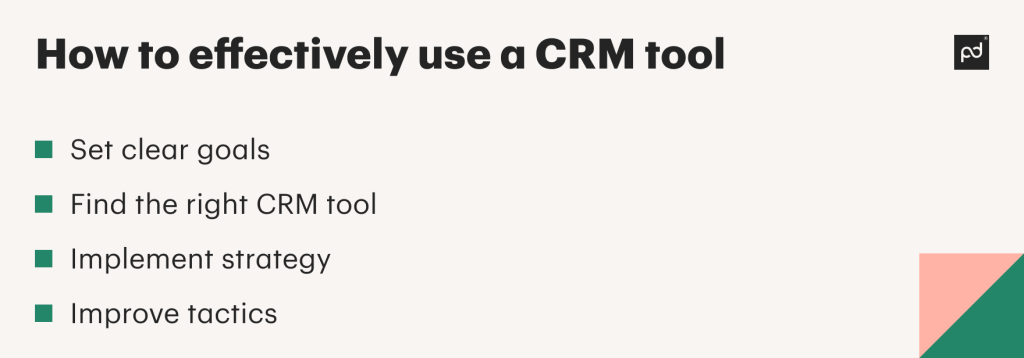Whether you’re in sales, marketing, or customer support, a customer relationship management system (CRM) is becoming increasingly essential to modern operations.
So, what is CRM software doing for today’s companies, what types of companies use a CRM, and which CRM strategies can you use to benefit your teams and customers?
What is customer relationship management (CRM)?
“Dunbar’s number” is around 150. This is the number of personal relationships you’re able to keep track of in your head.
Once your company gets to a certain size, it’s impossible for your marketing and sales teams to keep tabs on all your customers manually.
Data becomes disorganized, notes on key accounts get lost, and teams struggle to collaborate across silos. Without detailed records of customer history, you lose track of who everyone is.
It’s inevitable that issues will be subsumed and buried by the chaos, and customers will leave unsatisfied.
To manage your relationships with sales prospects, new buyers, and long-time customers effectively, you need a CRM.
CRMs help businesses build and maintain long-term relationships with customers.
This leads to increased satisfaction and loyalty and, ultimately, increased revenue for your company.
A CRM system can identify customer needs, establish effective communication channels, personalize experiences, and use data analytics to evaluate customer interactions.
The above helps marketing, sales, and support teams to prioritize the most important customer relationships and successfully resolve issues.
With this data-driven approach, businesses can streamline their service processes, identify new opportunities, and improve overall efficiency.
The importance of CRM in modern business practices
In many of today’s markets, multiple companies will run their operations using identical tools and APIs.
For example, two competing eCommerce businesses might be hosted on Shopify, run a rewards program on Smile, and handle deliveries through UPS.
This makes it hard for companies to differentiate themselves on all fronts but one: The relationships they build with their customers.
At scale, managing these relationships effectively is only possible with the help of CRM technology.
With a CRM, you can gain valuable insights into your customers’ preferences, purchase and usage habits, and common support issues.
This will help you understand hundreds or thousands of relationships at once and tailor your products accordingly.
So, CRM is great for your customers and your product.
For your team, a good CRM’s integration options will also improve collaboration between departments.
The sharing of data gives everyone a better idea of who customers are and enhances everything from the sales cycle to onboarding and support.
If you’re shopping around for Salesforce alternatives, this level of integration is one of the main things you should look for.
Take PandaDoc, for example.
Our document workflow software has native integrations both with Salesforce and a range of other CRMs.
That makes it easier for your business to streamline processes that need an input from your CRM and functionality you can only get from PandaDoc.
But what kinds of companies are using CRM software, and could it be of use to your business?
Examples of companies using CRM
So, what companies use CRM?
1. Wells Fargo
US bank Wells Fargo uses Salesforce CRM to track customer mortgages, credit cards, and investments in one place.
They say their CRM software has increased personal productivity and allowed staff to focus on higher-value work thanks to automated workflows.
Wells Fargo’s CRM use has saved hundreds of nonproductive IT and business hours and reduced technical headaches, all of which contributes to their bottom line.
2. Asher College
Asher College offers courses in business, medicine, trades, and technology.
Before they used LeadSquared’s CRM, they were struggling to reach potential students and grow their enrolment numbers.
Their new system offered integrated features like calls, bulk emails, SMS, and lead scoring, which allowed their counselors to facilitate effective interactions with prospects.
Moreover, the single solution provider offered advantages such as lead scoring, automated marketing campaigns, detailed reports, and centralized data.
With its CRM, Asher was able to reach leads 12x faster, which led to a contact rate growth of 13% and a 5% increase in scheduled appointments.
3. GainTap
GainTap CEO Graham Onak previously oversaw a large company that nonetheless managed its customer relationships in G Suite (now Google Workspace).
These loose documents were the only way to share information between departments—and even with clients.
Onak confessed “this got unmanageable over time, and a CRM was set up to house… data and processes.
Now their sales team enters information and the right departments are notified automatically that there is new work for them to do.”
On the types of companies that use CRM systems, he noted “I’ve seen CRMs implemented at multi-million-dollar-a-year companies and small, one-person businesses …
No matter the business size, the goal of setting up a CRM is to be more organized around customer activities and data, in order to increase productivity and revenue.”
Examples of CRM strategies
So, once you have a customer relationship management system, what can you use it for?
Here are some handy CRM examples to show you the way.
Improving customer experience
Inefficient communication, information sharing, and operations hurt the customer experience.
If you’ve ever had to explain a problem to multiple customer service reps over the phone, you know it can make a bad situation much worse.
With a CRM, you can make sure you’re not putting that burden on your customers.
By integrating sales, marketing, and support, a CRM gives you a comprehensive view of the customer’s history with your company.
This holistic approach enables teams to deliver more personalized service, tailored to the specific needs and preferences of each individual.
This not only saves time for the customer but demonstrates your company’s commitment to providing a seamless and “joined-up” service.
In a potentially stressful customer support situation, this level of attention and care can make a significant difference.
Enriching customer data
CRMs give you better, more accurate customer data to improve your operations.
A CRM centralizes customer information and interactions in one place.
With this enriched data, you can customize marketing campaigns, sales pitches, and customer service to improve satisfaction and retention.
CRMs achieve this by connecting with other parts of your tech stack, like your customer service and email marketing platforms.
This gives you a comprehensive view of the customer journey, which you can use to make more informed decisions.
Shortening your sales cycle
Using CRM software can make the sales process faster, too. This is especially important in B2B, where it can take weeks to turn leads into customers.
By analyzing all available data, a CRM helps you figure out which leads are more likely to say “yes” without weeks of meetings.
This enables your sales team to work faster and empowers marketing to focus on similar leads.
Reporting on performance
A CRM is an essential tool for big businesses looking to track and report on sales performance.
By centralizing and organizing customer data, CRMs can automatically report on interactions.
Reports on funnel analysis and customer churn help sales and marketing teams to identify what works and what doesn’t.
Types of CRM software and their benefits
Not all CRMs are the same.
While every product is different, however, we can break them down into four main categories:

Operational
Operational CRMs improve acquisition and retention by streamlining and managing customer interactions.
They can automatically trigger certain processes based on customer events.
This could be making a purchase or visiting a specific site page.
Tracking touchpoints and automating follow-ups can take the load off sales and customer success teams.
This is great for medium-to-large businesses with hundreds to thousands of accounts.
By using a CRM as the brain of your automated operation, you can provide a higher-quality service at scale.
Analytical
While operational CRMs help collect leads, analytical CRMs study customer data.
This shows you how leads are progressing through your sales funnel, which sales and marketing channels work, and where you need to improve.
By assigning leads to sales staff, you can also see who your “A-players” are and who might need more support.
Analyzing customer satisfaction scores can even show what your happiest customers have in common.
An analytical CRM is great for businesses of any size.
Big companies can get marginal gains from a lot of customers, while small companies and startups can figure out how to turn regular customers into brand loyalists.
Over time, every company can learn more about its customers and build a strategy around their needs.
Collaborative
In big businesses, it’s easy for sales, marketing, and support teams to drift.
However, if they collaborate, they’ll learn more about customers together than they ever will apart.
That’s the appeal of collaborative CRM.
In a B2C company, it’s rare for a customer to speak to several people from the company early on.
In B2B, however, they might talk to sales, customer success, IT, and support in a matter of weeks.
Once they’re set up, they’ll also receive ongoing communications from marketing.
A collaborative CRM makes sure these departments are singing from the same hymn sheet.
When sales acquire a lead at a trade show, marketing knows about it.
Even if that lead only opens one marketing email, the sales rep knows to bring that topic up on a call.
When the onboarding team meets this new customer, they have all the sales rep’s notes on the problems they’re trying to solve.
Ergo, they don’t need to be told what the customer’s concerns are to tailor onboarding to them.
Strategic
Strategic CRMs share many features with collaborative ones.
However, they’re more focused on long-term customer engagement, retention, and loyalty.
Their purpose is to gather data on customer needs and preferences to offer even more value.
Which communication channels do customers prefer?
Which subject lines get them to open onboarding emails? What kind of customer is most likely to churn? They can answer all these questions and more.
How to effectively use a CRM tool
If you’re wondering how to use CRM tools, here are some tips:

1. Set clear goals
The first step in successfully using a CRM tool is to set clear, specific goals.
Do you want to streamline communications between your sales and marketing teams? Improve customer retention? Increase first-call resolution among your support team?
Answering these questions before looking for a CRM will help you work out which is the best solution for you.
2. Find the right CRM tool
Once you know what you’re looking for and are trying to achieve, you can start shopping around for your ideal CRM.
Popular tools like Salesforce, HubSpot, and Pipedrive offer slightly different solutions.
HubSpot has more of an emphasis on marketing and Zendesk on customer support.
Meanwhile, Salesforce and Pipedrive are all about helping manage sales leads and key accounts.
With the help of CRM integrations, the ideal tool should also play well with the rest of your tech stack.
Simple data integrations can remove needless copying and pasting of customer information.
But the biggest value-add is in the creation of highly automated, end-to-end workflows.
By integrating your document workflow software with your CRM, teams can manage proposals, quotes, and contracts from one app.
How far a document has progressed is an important part of the sales cycle, and integration lets your team see all of this in one place so nothing gets lost.
3. Implement strategy
With your new CRM, you can start to transform your customer relationships and operations.
Marketing can launch more automated, personalized email campaigns than ever before.
With more complete data available in your CRM, they can segment your audience and tailor their messaging accordingly.
This targeted approach will increase conversions and improve customer experience.
A CRM can also create a streamlined customer service operation. With customer information in one place, support staff can resolve issues far more efficiently.
4. Improve tactics
Once your CRM strategies are in place, you can use them to analyze data and adjust your tactics accordingly.
Automated reports on customer behaviors will help you refine your sales and marketing strategies.
You can identify trends and areas for improvement and take a more targeted approach to meet customer needs.
As your market evolves, you can make data-driven adjustments to your tactics as needed.
Used to best effect, a CRM can be a powerful tool for continuous improvement.
Boost your company’s relationship with its customers using CRM solutions
Investing in a CRM enables you to build trust and loyalty with customers, streamline processes, foster open communication, and integrate with other business processes.
Processes like those that you can streamline with PandaDoc.
With PandaDoc’s quote functionality, for example, businesses can upload their product catalogs and quickly generate accurate quotes, as well as apply taxes, margins, and a-la-carte pricing.
Analytics gained from CRM data helps identify trends and ensures quotes are tailored ideally.
Seeing quote statuses from one central dashboard and being able to follow up when and how is also beneficial. With PandaDoc, closing a quote is much faster due to eSign from any device.
Ultimately, a CRM is a smart move toward building long-term customer relationships, as long as it also integrates with your other tools.
Why not schedule a demo with PandaDoc today to find out how it can work together with a range of CRMs?
Disclaimer
PandaDoc is not a law firm, or a substitute for an attorney or law firm. This page is not intended to and does not provide legal advice. Should you have legal questions on the validity of e-signatures or digital signatures and the enforceability thereof, please consult with an attorney or law firm. Use of PandaDocs services are governed by our Terms of Use and Privacy Policy.


